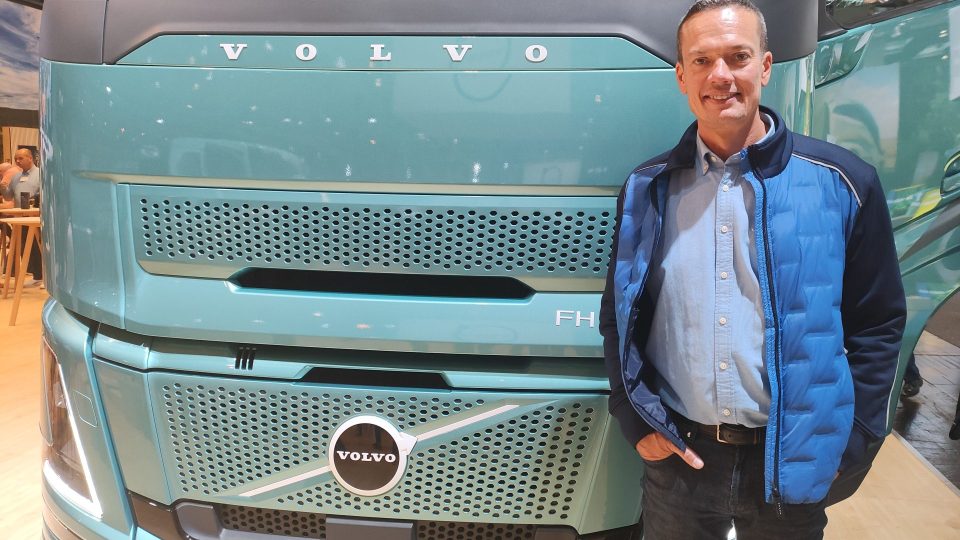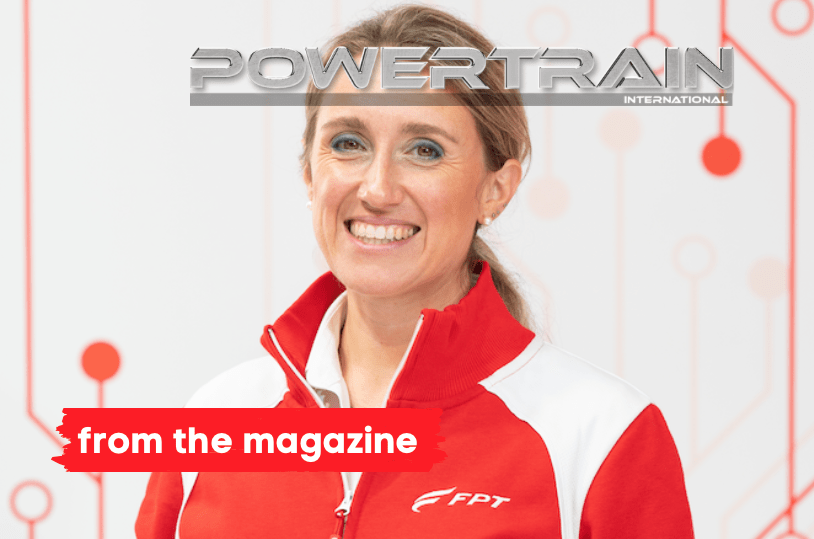Kubota, waiting for Bauma
Kubota,waiting for Bauma revealed us some of the novelties coming from their world. In particular the words are the ones of Daniel Grant and Tony Tonegawa. Behind an impressive 2018 and ahead the upcoming bauma, few months after the arrival of Stage V. Meaningful Numbers How many engines did Kubota sell in 2018? 2018 was a […]
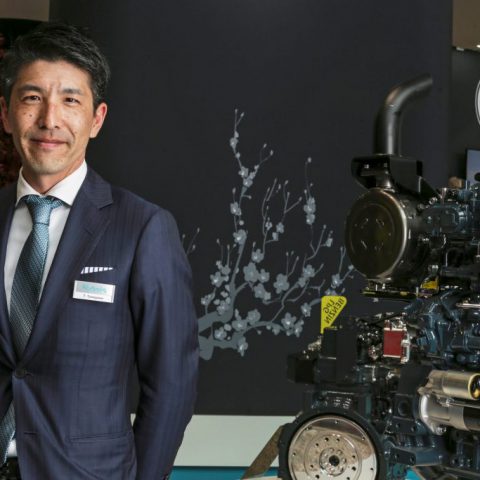
Kubota,waiting for Bauma revealed us some of the novelties coming from their world. In particular the words are the ones of Daniel Grant and Tony Tonegawa. Behind an impressive 2018 and ahead the upcoming bauma, few months after the arrival of Stage V.
Meaningful Numbers
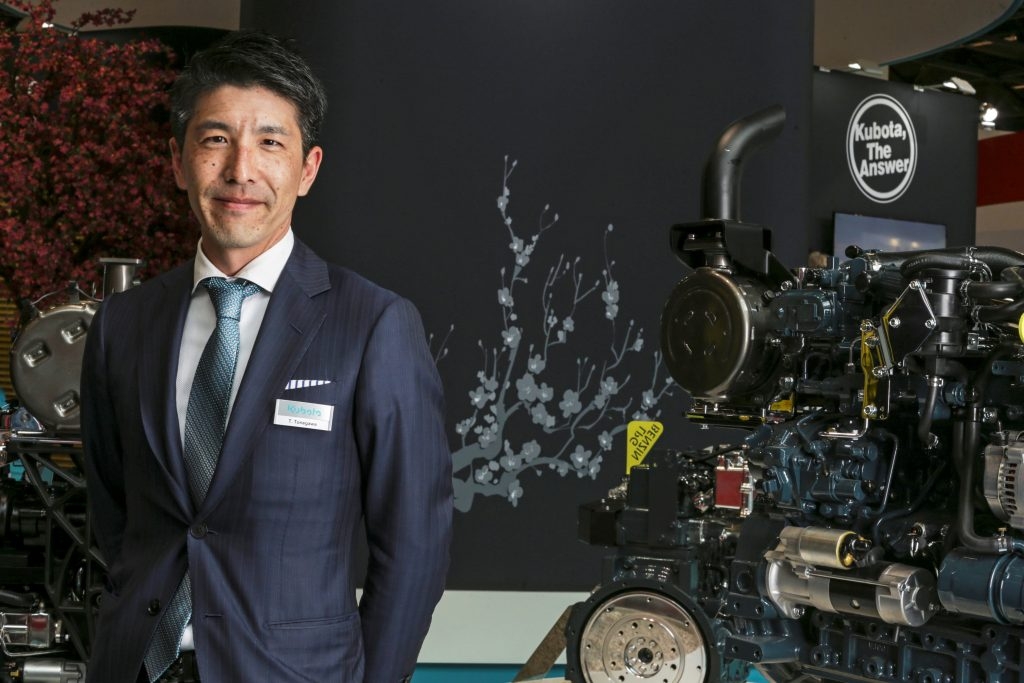
How many engines did Kubota sell in 2018?
2018 was a record year for Kubota, with growth of over 20%. Normally, Europe accounts for about a third of our global engine sales, but in 2018 we saw a significant surge.
V5009. The 5-liter displacement is a key segment for motorists. Is Kubota ready to challenge competitors?
Kubota is historically focused on the off highway. The 09 Kubota series was developed specifically for the demanding operational needs of this market. The fundamental philosophy of Kubota is to achieve a perfect balance between performance, quality and cost. If we compare the 5 and 4.3 liters, our engines may not excel in terms of power and torque, but the aspects that translate into real quality for users and Oems are always of absolute value. The life cycle of the engine and reliability can not be translated into numbers; when we talk about performance in Kubota we talk in terms of reliability, taking into consideration the entire useful life of the engine.
KUBOTA. GLOBAL STRATEGIES AND THE EUROPEAN MARKET
Kubota, waiting for Bauma
3 cylinders, 50 HP, 1.8 liter displacement. It is the profile of the newborn engine presented at Intermat. Can you give us more details in terms of the specifications and potential applications of this ultra-compact engine with a high power density?
This project was also driven by the aforementioned trend towards downsizing. Kubota’s strategy is to always have the most suitable engine for each application; if we analyze our range, which is growing day by day, the intention is to point towards specific ranges of power, including that of 56 kW. Many machines with powers just above this power range are subject to progressive downsizing, and therefore we have developed a high torque output version to keep us below 56 kW without penalizing performance.
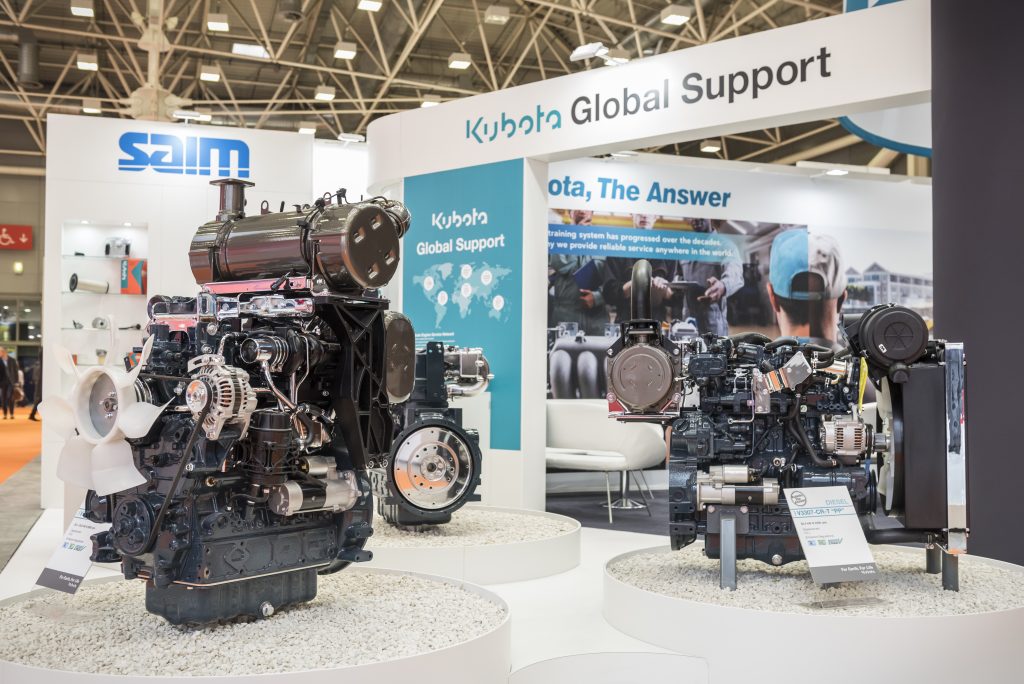
Kubota is not only focused on upgrading top-of-the-range engines, but also on constantly improving power levels in categories below 36 kW and 19 kW…
The 1.8-liter engine is in the middle range between 19 kW and 56 kW, and one of the models we are most proud of in this power range is the new 1.5-liter 4-cylinder engine. The 1.8-liter 3-cylinder has slightly larger dimensions, but for power density in the category below 36 kW we are convinced that the V1505-CR-T will be the absolute leader of the segment. This is why we have introduced in the range the 1.5-liter common rail, which will soon be on the market; judging from the requests, we are sure that this model will have a good success.
Dual fuel, LPG or natural gas to bypass the caudine forks of Stage V. In the category under 2 liters of displacement this seems a good strategy, but what about the upper segments?
Today we have a full range of dual fuel engines up to 3.8 liters of displacement. Our range of Spark Ignited engines is in line with our diesel line, and the 0.9, 1.6, 1.9, 2.5 and 3.8 engines use a single-piece engine block similar in size to that of the diesel versions. Today, Kubota is a manufacturer of NRMM diesel and non-diesel engines, which clearly illustrates our position in the current debate against diesel engines. Semi-electrification and electrification are two other very important trends at this stage, but in the end the market will decide which path to take. The approach to the Italian market is oriented to the research of niches and new applications that have shown a certain growth in the last five years, for example the sweepers, where we hold an excellent share. We, as distributors, have embraced this approach because we believe there is an ‘alternative to electricity’, so to speak. Reliability is not only the result of high performance, but it also means special applications that respond to specific requests.
What can you tell us about the Italian market and your partnership with Saim?
Italy is a very important strategic market for Kubota, and the one with Saim is a very important partnership. In addition Italy is very important because Italian customers know very well how good a product is, which leads us to think that if a solution does not succeed in Italy it will be difficult to do so in Europe. We are talking about a very competitive market, in which there are many engine manufacturers and it is characterized by a very demanding but absolutely strategic clientele, elements that make this partnership a key factor.
KUBOTA, TONEGAWA AND FREE MARKET






